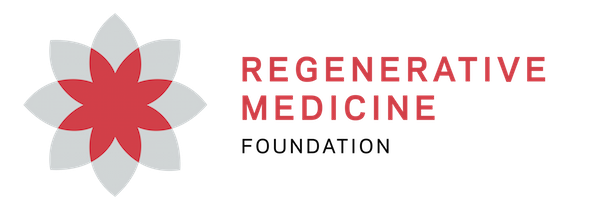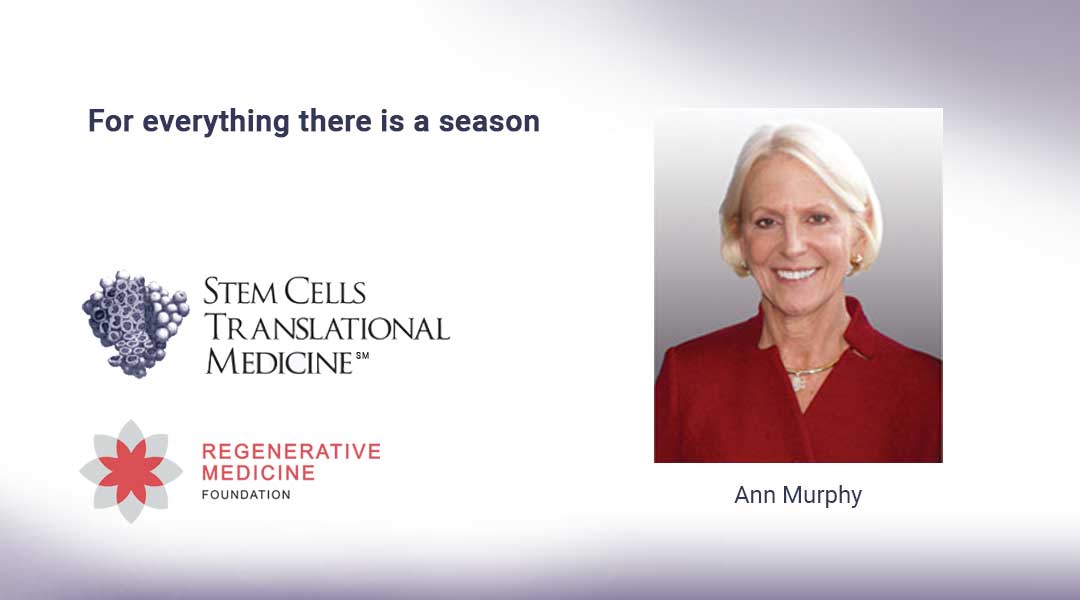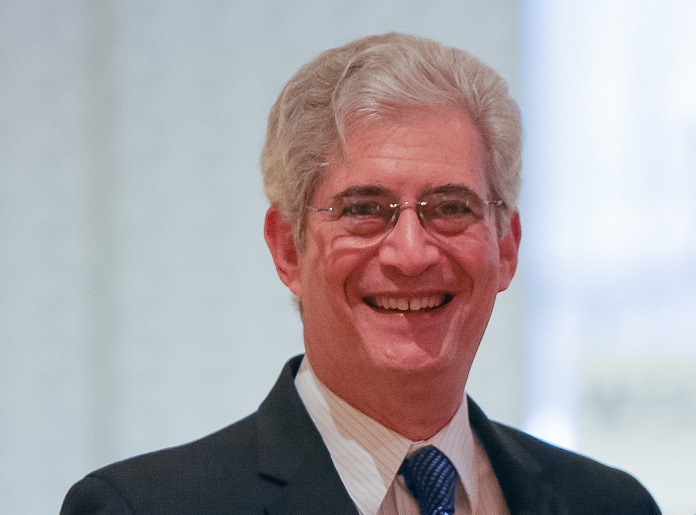As 2021 draws to a close, we celebrate the first decade of STEM CELLS Translational Medicine (SCTM) with gratitude to our devoted editors, reviewers, authors, and of course, our global loyal readership … all of you are a vital part of this first decade’s history.

Ann Murphy
Founded in 2011 to bridge the gap between bench science and its clinical applications, SCTM was given foundational support with grants from California Institute of Regenerative Medicine (now known as California’s Stem Cell Agency) and from Quintiles Transnational (now IQVIA). As its “Big Sister” journal STEM CELLS approached its 30th anniversary, we recognized the importance of worldwide studies that were moving science from laboratory incubators to clinical translation.
When STEM CELLS was founded, it became the first journal devoted to what was then a novel basic research arena. With its proven history of publishing high-impact articles, as well as its access to and excellent working relationships with world-renowned stem cells experts, AlphaMed Press’s creation of SCTM as STEM CELLS‘ “Sister Journal” was a logical next step, one in which the sister journals would work in tandem to derive synergy from each other and thereby to foster translational science, moving discoveries from the laboratory to the clinic, as it relates to stem cell therapies and regenerative medicine, at an accelerated pace by allowing knowledge to be aggregated and shared more readily and encouraging collaborations among stem cell biologists, clinicians, and engineers.
As our Founding Editor-in-Chief, Anthony Atala leads the Journal with the dedication and passion for which he is admired around the world. As proof positive, just read what Tony wrote a decade ago in his opening editorial to mark SCTM’s first issue, January 201211:
“As advances in our understanding of the field keep moving forward, more cell types and applications are being used in patients. It is only fitting then to have a journal that would serve as the forum for these types of advances in the field of cell therapy, a journal that would not only publish the most relevant papers but also attempt to keep an accurate pulse on the people and events that may influence the direction of the field. A term that best describes the transition from the bench to the bedside, and the process by which this occurs, is translational medicine. We, therefore, welcome and celebrate the formation of: STEM CELLS Translational Medicine. This exciting new journal will foster the proper growth and ethical development in this fast-moving field. As the sister journal to STEM CELLS, STEM CELLS Translational Medicine will bridge the gap in the existing stem cells journal spectrum, and together they will elevate the science to applications that will help the lives of many people.”

Anthony Atala Founding Editor-in-Chief
With Tony’s leadership, we assembled a stellar international editorial board with Paolo DeCoppi, Senior Associate Editor, and Associate Editors Douglas Losordo, Geoffrey Gurtner, Alan Trounson, and Rocky Tuan. Terry Lappin, who has served as STEM CELLS Concise Review Editor since 2010, also joined SCTM as its Concise Review Editor. Joanne Kurtzberg and Karen Ballen edit the Journal’s Cord Blood Section, with Mahendra Rao leading Standards, Policies, Protocols, and Regulations for Cell-Based Therapies, and Ravinder Bhatia leading the section devoted to Manufacturing for Regenerative Medicine. Each of them has earned global accolades for their pioneering prominence in their respective disciplines. Now they are fulfilling the mission of this journal, namely: to significantly advance the utilization of cells for clinical therapy by bridging stem cell molecular and biological research and speeding translations of emerging lab discoveries into clinical trials, thus helping to move applications of these critical investigations closer to accepted best practices and ultimately improve outcomes.

First Issue of SCTM
SCTM received its first impact factor within the first two years of publication. Our first year in print exceeded expectations. Within its first year of publication, SCTM was selected for indexing by the National Library of Medicine, a remarkable feat that few journals earn. During its first decade, SCTM has published original articles and reviews related to the clinical translation of all types of stem cell, cell, tissue engineering, and regenerative medicine therapies, papers with topic areas relevant to the process of translation, including cell-based drug development, screening, and toxicology; enabling technologies; standards, policies, and regulations; and protocols and manufacturing for cell-based clinical translation and therapies, including first-in-human reports. Each year the journal has published a special issue for the World Stem Cell Summit and Regenerative Medicine Essentials Course, highlighting research in areas such as the development of safe and effective stem cell therapies for neurodegenerative diseases, osteoarthritis, corneal wounds, and spinal cord injury, as well as captivating reviews covering the applications of mesenchymal stromal/stem cells (MSCs) in drug delivery, preclinical application challenges, exploration of the therapeutic effect of MSCs, and an update on cell-based therapies for age-related macular degeneration.
The Journal has created strategic partnerships, serving as the official journal partner of the Regenerative Medicine Foundation and the official journal of the Cord Blood Association and the Regenerative Medicine Manufacturing Society. Together, we work to bring about a vibrant regenerative medicine community of academic, government, and industry colleagues who are all working to advance the field by producing the Regenerative Medicine Weekly newsletter and hosting timely webinars and sponsored conferences.
It has been my honor to work with Tony Atala and all our dedicated editors over the years, beginning with my husband, Martin J. Murphy, who recruited me early on as a volunteer to help with the founding of the journal, STEM CELLS, creating its publisher, AlphaMed Press, and establishing its Sister Journal STEM CELLS Translational Medicine.
I am grateful to the Journal’s board members, reviewers, authors, readers, and other contributors to the exciting process of identifying and publishing manuscripts that are highly impactful in the field of stem cells and regenerative medicine. I am grateful to Natalina Quarto, who has served as the journal’s science editor since the beginning. I am grateful to the wonderful AlphaMed staff, Tina Belle, Suzanne Watters, Sharon Lee, Chelsea Kekahuna, Duane Beaudot, and Matt Kenney, who have carefully cared for and have, therefore, fostered SCTM’s meteoritic rise in international prominence. I am also grateful to my partner-husband, Marty, our five children, Siobhan, Deirdre, Marty III, Sean, and Brendan, and our 10 grandchildren, Alice, Paul, Liam, Fiona, Keegan, Katelyn, Colin, Ben, Connor, and Clare for their sacrifice, inspiration, and great humor.
For everything there is a season…
And this is the season to entrust STEM CELLS Translational Medicine from AlphaMed Press to the care of Oxford University Press (OUP). Founded in 1586, OUP is the world’s largest university press. Effective January 2022, OUP will proudly welcome the Sister Journals, STEM CELLS and STEM CELLS Translational Medicine within its esteemed ranks. We look to them to fulfill the potential in SCTM we saw 10 years ago. Its potential is now brighter than ever. The best is yet to come!
Fare thee well!




